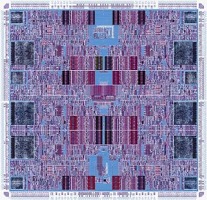Asynchronous
Definitions
- 1: not synchronous; occurring at different times
- computing: (of a request or a message) allowing the client to continue during a processing sequence.
Description
Asynchrony, in the general meaning, is the state of not being synchronized.
- Asynchronous learning, a student-centered teaching method that uses online learning resources to facilitate information sharing outside the constraints of time and place among a network of people
- Collaborative editing systems
In specific terms of digital logic and physical layer of communication, an asynchronous process does not require a clock signal, in contrast with synchronous and plesiochronous systems.
- Asynchronous circuit, is a sequential digitallogic circuit which is not governed by a clock circuit or global clock signal
- Asynchronous system, has no global clock: instead, it operates under distributed control, with concurrent hardware components communicating and synchronizing on channels
- Asynchronous communication, transmission of data without the use of an external clock signal, where data can be transmitted intermittently rather than in a steady stream
- Asynchronous serial communication, describes an asynchronous, serial transmission protocol in which a start signal is sent prior to each byte, character or code word and a stop signal is sent after each code word
- Asynchronous serial interfaces
- Asynchronous cellular automaton, able to update individual cells independently, in such a way that the new state of a cell affects the calculation of states in neighbouring cells
At the higher data link layer of communication, asynchrony is synonym of statistical multiplexing, such as in packet mode. The information transmission may or may not start immediately as requested by sender, the additional delay being caused by medium congestion. Contrast with example of circuit switched communication, which (once circuit is established) allows immediate start of transfer with a guaranteed bit rate. Confusingly, a communication is often synchronous at the physical layer, while being asynchronous at the data link layer.
- Asynchronous Transfer Mode, according to the ATM Forum, "a telecommunications concept defined by ANSI and ITU (formerly CCITT) standards for carriage of a complete range of user traffic, including voice, data, and video signals," and is designed to unify telecommunication and computer networks
- Packet switched systems such as Ethernet or IP
In computer programming, asynchronous events are those occurring independently of the main program flow. Asynchronous actions are actions executed in a non-blocking scheme, allowing the main program flow to continue processing.[1]
- Asynchronous I/O, in computer science, is a form of input/output processing that permits other processing to continue before the transmission has finished
- Asynchronous application programming interfaces (APIs)
- Asynchronous method dispatch ](AMD), a data communication method used when there is a need for the server side to handle a large number of long lasting client requests
- Ajax (programming), asynchronous JavaScript and XML
In electric motors, an asynchronous motor is a variant where the electromagnetic field turns with a different (higher) speed than the rotor; the difference is called slip.[1]
